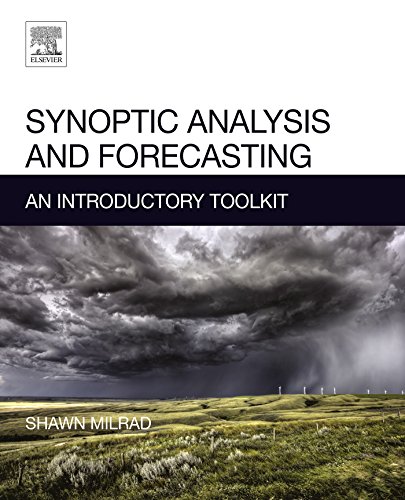

Most ebook files are in PDF format, so you can easily read them using various software such as Foxit Reader or directly on the Google Chrome browser.
Some ebook files are released by publishers in other formats such as .awz, .mobi, .epub, .fb2, etc. You may need to install specific software to read these formats on mobile/PC, such as Calibre.
Please read the tutorial at this link: https://ebookbell.com/faq
We offer FREE conversion to the popular formats you request; however, this may take some time. Therefore, right after payment, please email us, and we will try to provide the service as quickly as possible.
For some exceptional file formats or broken links (if any), please refrain from opening any disputes. Instead, email us first, and we will try to assist within a maximum of 6 hours.
EbookBell Team

4.0
56 reviewsSynoptic Analysis and Forecasting: An Introductory Toolkit provides the bridge between the introductory fundamentals of a meteorology course and advanced synoptic-dynamic analysis for undergraduate students. It helps students to understand the principles of weather analysis, which will complement computer forecast models. This valuable reference also imparts qualitative weather analysis and forecasting tools and techniques to non-meteorologist end users, such as emergency/disaster managers, aviation experts, and environmental health and safety experts who need to have a foundational knowledge of weather forecasting.
Key FeaturesSecond- and third-year undergraduate meteorology students; first-year graduate students with an undergraduate degree in a field other than meteorology; professional meteorological users (e.g., broadcast weather presenters, pilots, dispatchers, emergency managers, environmental/air quality experts)
Table of ContentsDr. Shawn M. Milrad is Assistant Professor of Meteorology at Embry-Riddle Aeronautical University. His research areas are in extratropical transition of tropical cyclones, synoptic-dynamic analysis of extreme events, particularly heavy precipitation; ice storms; convective snowsqualls; and synoptic-scale aspects of severe convection, including tornado outbreaks and Mesoscale Convective Systems (MCSs). He has published several peer-reviewed articles in American Meteorological Society journals.
Affiliations and ExpertiseEmbry-Riddle Aeronautical University, Daytona Beach, FL, USA